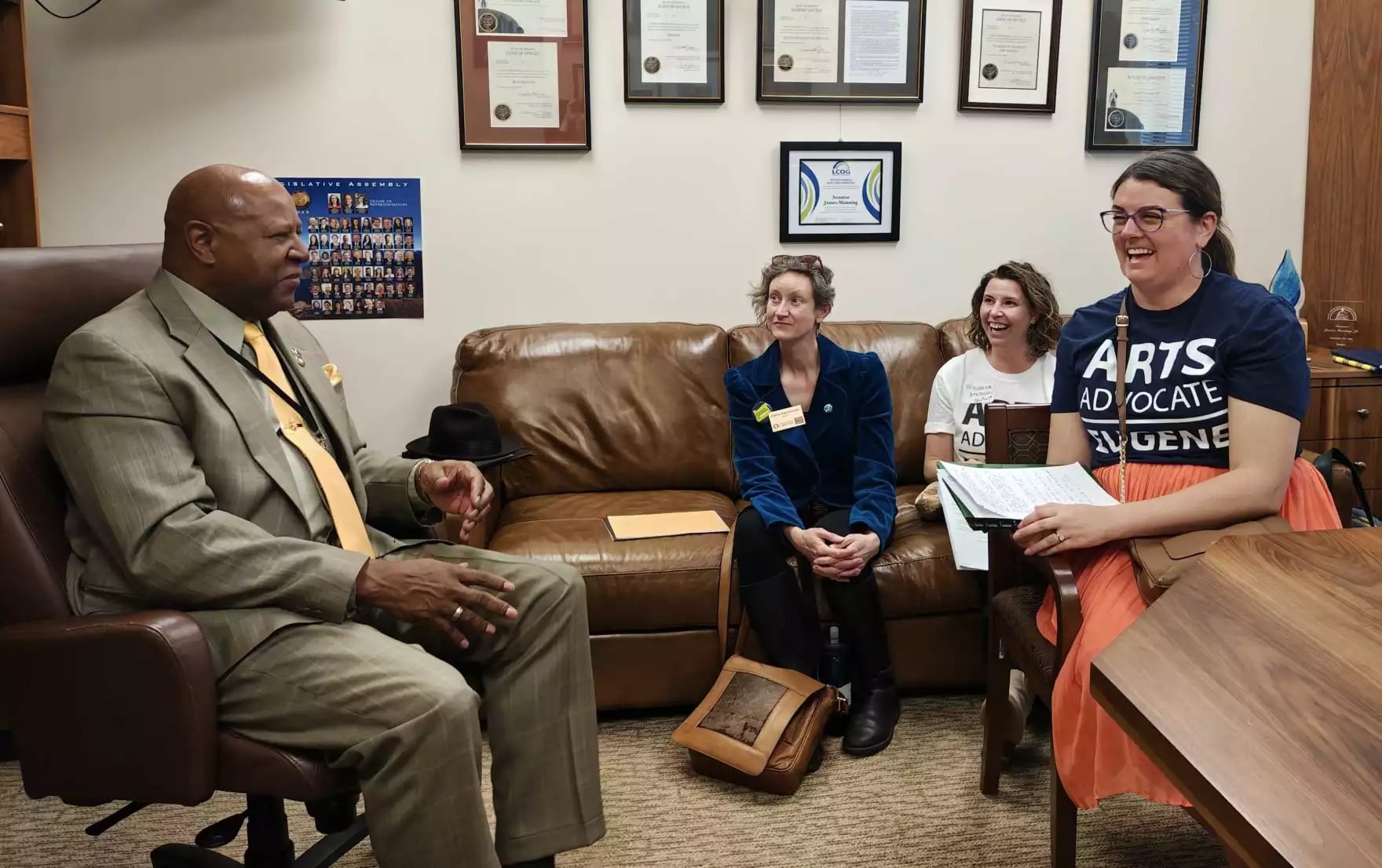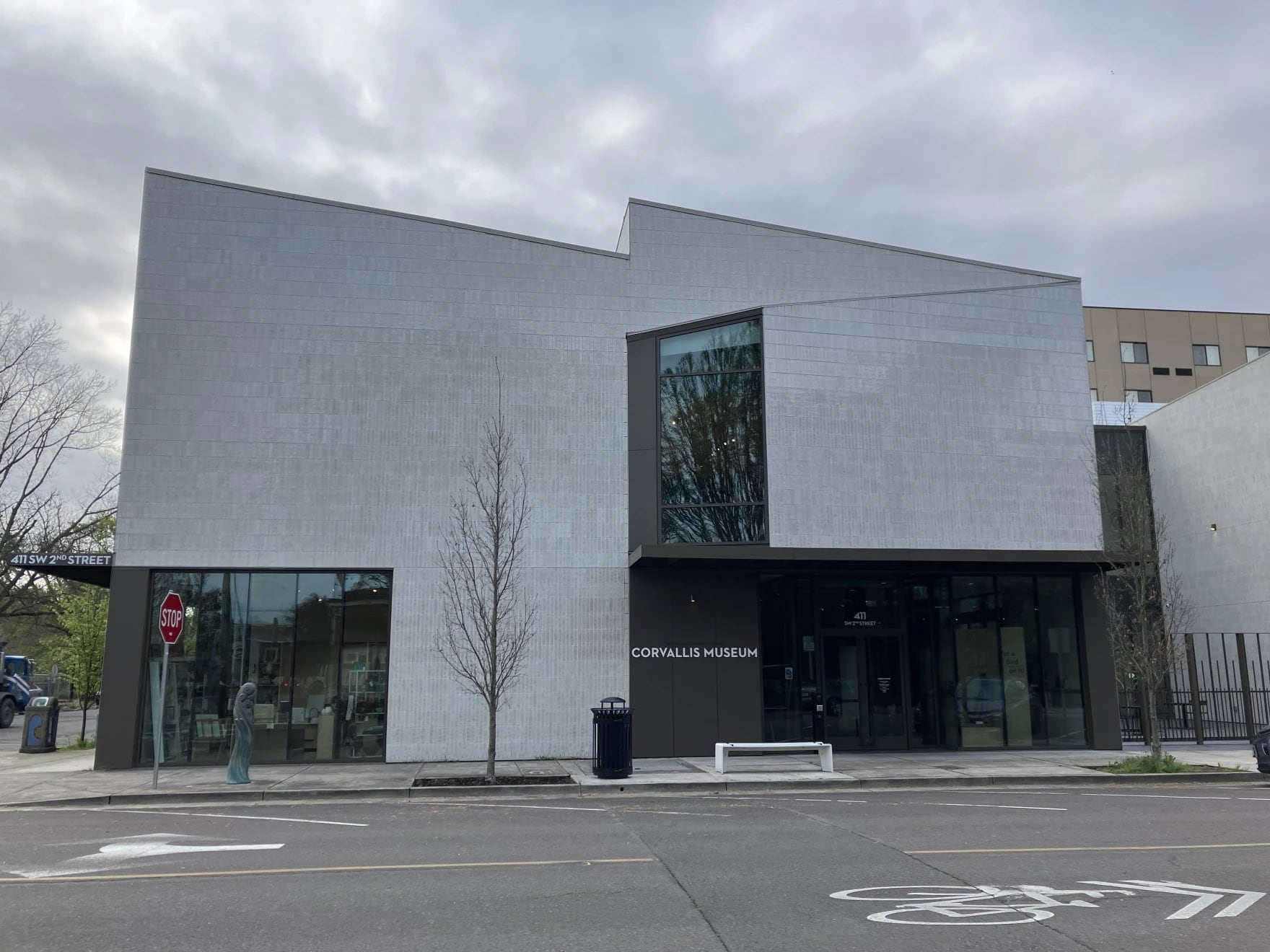

Published on: 05/01/2025
This news was posted by Oregon Today News
Description
Artists, nonprofit leaders, and cultural workers from across the state gathered at the Oregon Capitol this month with a common message: Arts and culture aren’t just “nice to have” — they’re vital, and they need support.
Organized by the Cultural Advocacy Coalition of Oregon, the event marked a coordinated effort to convince lawmakers that now is the time to boost the state’s investment in the arts. Funding for grants administered by the Oregon Arts Commission has not increased since 2007. As a result, the state ranks 39th in the nation for arts funding, according to advocates.

Meanwhile, federal grant opportunities are shrinking. If the state doesn’t step up, say arts organizations, many local arts programs could be left behind–particularly in smaller, rural communities.
“With the dismantling of the National Endowment for the Humanities and the Institute of Museum and Library Services, the loss of those funding entities is actually pretty catastrophic, especially for a state like Oregon,” said Claire Blaylock, a caucus coordinator for the Cultural Advocacy Coalition Foundation. “Because what people don’t understand is that a lot of it has gone to support small to mid-size, rural arts and culture institutions.”
At the heart of this year’s advocacy is House Bill 3189, which would increase the Arts Commission’s budget from $4 million to $10 million. Supporters say it’s a necessary increase for the agency to continue serving Oregon’s cultural organizations and communities.
“The Arts Commission has not had a budget increase in [17] years,” said Blaylock. “Oregon ranks first in the country for the number of individuals who make donations to arts and culture. So we have this incredible base of support from individual Oregonians. And what we’re asking for is the state to start reflecting that incredible level of individual support.”
The impact of funding
Attendees at the advocacy day in Salem included representatives from dance companies, museums, arts councils, and community centers. Among them was Jen Hartman, Producing Artistic Director of the nonprofit Oregon Children’s Theatre.
“It’s just a devastating moment for our sector when the narrative around our work is that it’s ‘just fun.’ It’s life-changing. Our impact on social, emotional, and mental health is robust, but it’s also academic,” Hartman said. “This is not just an arts and culture platform, this is education, health and human services, and economic development.”
House bill 3189 was approved by a House policy committee in March, and is awaiting action in the legislature’s budget-writing committee. Advocates are encouraging Oregonians to reach out to their legislators, friends, and family to share stories about the valuable impact of arts organizations in their communities.

One lawmaker in their corner is Sen. James Manning, D-Eugene, who met with several advocates from his district during the event and said he understands the value of the arts.
“One thing I’ve always believed in was the arts, because I found that even when I was in high school—years ago—art, theatre, music, and stuff, they keep you out of trouble,” Manning said. “They give you an avenue to do something, to be creative.”
But Manning also offered his visitors a reality check about the complicated process of putting together a state budget.
“Everybody who comes here has a potential for a good project,” he said, before reminding them of the many other requests for funding that lawmakers receive each year.
One community’s response
Recently, the Benton County Historical Society and several other arts and culture organizations in the county released a joint statement updating supporters on the situation with federal funding for the arts. The letter gave a closer look at how the cuts would impact the Corvallis and larger Benton County community.
“There are so many things happening at the federal level every single day,” said Jessica Hougen, the executive director at Benton County Historical Society. “We really wanted to make sure that people in our community understood what the impacts of some of those changes were going to be on our local community.”
In the last two months, the Trump administration has made cuts and changes to federal agencies that provide support to arts and culture organizations throughout the country. Staff at both National Endowment for the Humanities and Institute of Museum and Library Services, independent federal agencies that provided grants to museums, libraries, and humanities councils, have been put on leave. Many humanities councils also received letters saying their NEH grants were being terminated.
With increasing news about grants being cut and federal agencies receiving visits from the Department of Government Efficiency, institutions across the country are bracing for impact. For the Benton County Historical Society, this has meant postponing plans to increase staff to help with their collections, and a more competitive grant market.
The Benton County Historical Society consists of the Philomath Museum and the Corvallis Museum. According to Hougen, the museums also function as education centers.
“We’re [another] place of informal learning, we can be a supplement for school districts,” said Hougen. “We can be a great alternative for homeschool groups and other groups who are looking for ways to do education that are not the traditional classroom setting.”
One full time staff member, 16 volunteers and more than 140,000 objects
The Corvallis museum houses more than 140,000 objects relating to Benton County history in the form of photos, documents, books, and publications. Currently, the upkeep of these objects is handled by one full-time staff member, Patti Larkin, and 16 volunteers.
Before IMLS staff were put on leave, the Benton County Historical Society was preparing to apply for federal grants with them to expand their team and provide Larkin with more support.
Larkin provides a variety of research-related support for the museum. Besides answering visitor questions at the museum, she also receives queries from researchers.
“We currently receive about 150 formal research requests each year and answer them by email, phone, and onsite research appointments depending on the nature of the request.” wrote Larkin in an email to KLCC. “Over the last year the amount of time to respond to each request varied from 10 minutes to 15+ hours, depending on the complexity of the request, and how well the needed materials were cataloged.”
Additionally, Larkin explained that her team is in the process of digitizing the collection in order to make it easier for researchers to find what they need. However, the process can get long and tedious since each object needs to be carefully processed.
“Each collection item requires documentation of ownership and cataloging. Cataloging involves numbering the item, researching its history, use and ownership, writing a physical description, and adding searchable terms about the item and people or institutions related to the item.” wrote Larkin. “We then photograph or scan the item, adding images to the records, and create the appropriate archival packaging for long-term, safe storage and access to the item.”
A competitive grant market
Hougen believes that, since federal agencies that provided the grants are facing cuts of their own, the market to apply for grants in other places will become even more competitive. She calls it an additional hurdle in a space that was still reeling from the COVID-19 pandemic.
“It’s going to be that much harder for any small nonprofits to even be able to apply for things, to compete with the bigger guys,” said Hougen.
For now, the Society is working on raising awareness about these cuts and has made a call for donations.
“It’s really important that we all work to stay informed on what is happening, that we speak up for what’s important to us in our communities,” said Hougen. “Every single person, if they can pick a nonprofit and support now, like we said in our statement, it’s not that it doesn’t matter which nonprofit that you support, it’s that supporting one supports the whole community.”
For Blaylock, with the Cultural Advocacy Coalition Foundation, the key message boils down to this: Arts and culture aren’t a luxury—they’re fundamental.
“We are what make people want to live here in Oregon,” Blaylock said. “Arts and culture, we are not extra, we are not something that is nice to have. We are something that is absolutely vital. It is like the air you breathe.”
Kendra Schertell and Sajina Shrestha are reporters with KLCC newsroom. This story comes to you from the Northwest News Network, a collaboration between public media organizations in Oregon and Washington.
It is part of OPB’s broader effort to ensure that everyone in our region has access to quality journalism that informs, entertains and enriches their lives. To learn more, visit our journalism partnerships page.
News Source : https://www.opb.org/article/2025/05/01/oregon-arts-advocates-want-more-state-support-as-federal-funding-wanes/
Other Related News
05/02/2025
Thousands gathered on the Portland State University campus as part of the 50501 rally move...
05/02/2025
Dear Annie My younger sister Megan has always been the more outgoing one in the family and...
05/02/2025
MEDFORD Ore- Providence Medford is discontinuing two programs attributing the cuts to redu...
05/01/2025
Principal Tresa Rast was placed on leave Wednesday for her personal safety The vice princi...
05/01/2025











